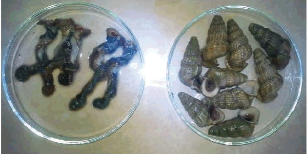Human activities can increase metal concentrations to
higher than background levels. The mining and processing ores, domestic waste
water effluents, storm water runoff and industrial wastes and discharges are
certain main anthropogenic sources of heavy metal pollution. Heavy metalpollution in aquatic ecosystem has been recognized as a serious environmentalproblem. In many cases, heavy metals occur in natural water bodies at levels
below their toxic thresholds, however, due to their non degradable nature, such
low concentrations may still pose risk of damage via uptake and subsequent
bioaccumulation by organisms, which cannot be effectively metabolized and these
absorbed metals are extracted.
Several scientific observations have shown that heavy
metals are bio concentrated or bioaccumulated in one or several compartments
across food webs. Besides, the contamination of resources with trace elements
may have devastating effect on the natural ecosystem functioning, as well as
cause a decrease of biodiversity and extinction of sensitive taxa. Metalbioaccumulation can be of importance from the public health point of view,especially when humans consume the accumulators. Secondly, this phenomenon is
now being exploited in the assessment of environmental quality, in addition to
chemical surveys of water and sediment.

No comments:
Post a Comment